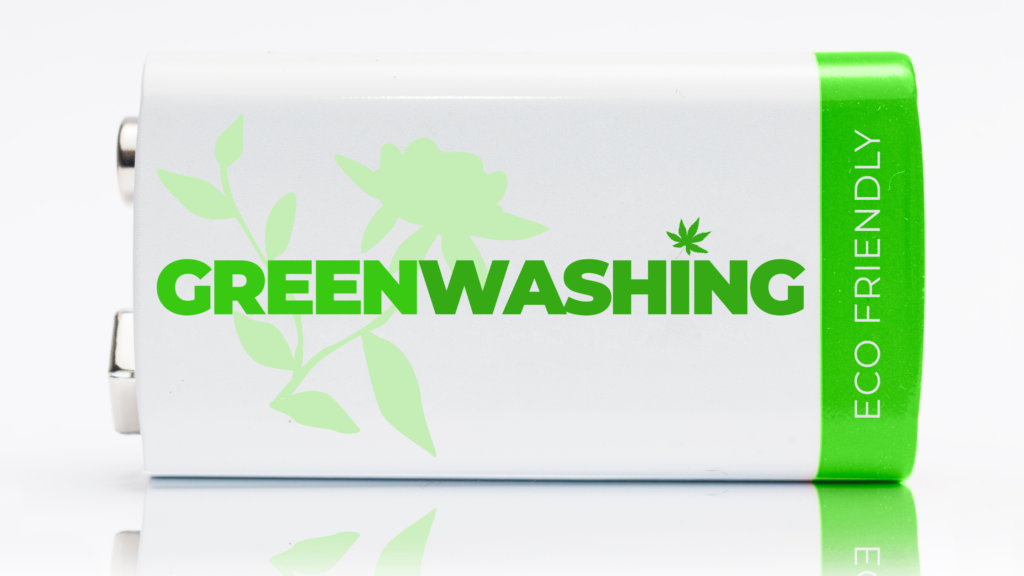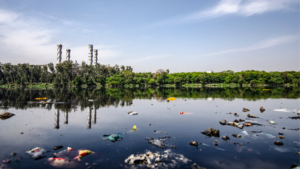81% of consumers intensely feel that companies should help improve the environment. This whopping high demand from people shows environmental awareness among the general masses. As this awareness rises, more and more people are now mindful of how their purchasing decisions impact our planet.
This shift has given rise to the eco-conscious consumer, who actively seeks out sustainable products and brands that align with their values. However, this positive movement has also paved the way for a troubling trend: greenwashing.
Whether greenwashing is a new brainwashing, we’ll uncover the truth in this blog post. We’ll also explore its implications, learn how to identify it, and discuss effective strategies to combat this deceptive practice.
What is Greenwashing?
Greenwashing is a marketing tactic used by companies to present their products or policies as environmentally friendly falsely. This can involve misleading claims about the sustainability of a product, exaggerated benefits, or the use of vague terminology that lacks concrete evidence. The term was coined in the 1980s, but the practice has become increasingly prevalent as consumers demand more eco-friendly options.
A significant attention toward the concept was drawn when Swedish activist Greta Thunberg opted out of Cop27 climate summit in Egypt (2022), labeling it a platform for “greenwashing.”

The Origins of Greenwashing
The concept emerged in the late 20th century, primarily in response to growing environmental movements.
In 1986, environmentalist Jay Westerveld coined the term while critiquing the hotel industry for encouraging guests to reuse towels as a means of conserving water, while simultaneously neglecting more significant environmental issues. This early example highlights how companies can create a façade of sustainability while avoiding meaningful changes.
Why Does Greenwashing Occur?
The main driver behind greenwashing is the growing demand for sustainable products. As consumers become more environmentally conscious, brands feel pressured to align themselves with these values. Unfortunately, some companies opt for deceptive marketing practices rather than implementing genuine sustainable practices.
This can be attributed to several factors:
1. Profit Motive
Companies often prioritize short-term profits over long-term sustainability. By marketing products as eco-friendly, they can attract environmentally conscious consumers without investing in actual sustainable practices.
2. Lack of Regulation
The absence of stringent regulations regarding environmental claims allows companies to make misleading statements without consequence. This creates an environment ripe for greenwashing.
3. Consumer Confusion
The complexity of environmental issues can lead to confusion among consumers. Many people struggle to discern which products are genuinely sustainable and which are greenwashed, allowing deceptive marketing to thrive.
The Impact of Greenwashing
Erosion of Trust
One of the most significant consequences of greenwashing is the erosion of trust between consumers and brands. When consumers discover that a company has misrepresented its environmental efforts, it can lead to disillusionment and skepticism toward all brands claiming to be sustainable.
This distrust can ultimately hinder the progress of genuine sustainability initiatives, as consumers may become apathetic or cynical about any claims made.
Reputational Damage
For companies caught greenwashing, the reputational damage can be severe. A study by the global consultancy firm, Accenture, found that 60% of consumers are more likely to purchase from a brand they trust, while 70% would stop buying from a brand that has been caught misleading them.
Brands like H&M and Nestlé have faced backlash for their greenwashing tactics, leading to significant hits to their reputation and sales.
Environmental Consequences
Perhaps the most alarming impact of greenwashing is its potential to undermine genuine environmental efforts. When consumers are misled into believing that they are making eco-friendly choices, it can detract from the urgency of addressing real environmental issues. This can result in continued reliance on unsustainable products and practices, ultimately exacerbating the very problems that greenwashing claims to address.

How to Identify Greenwashing
Being able to spot greenwashing is crucial for consumers who want to make informed choices.
Watch out for these red flags when making a purchase decision:
1. Vague Claims
Be wary of products that use terms like “eco-friendly” or “natural” without providing specific details. These terms can often be misleading and lack concrete evidence.
2. Lack of Transparency
Brands that do not disclose their sourcing, manufacturing processes, or sustainability certifications may be hiding behind a façade of eco-friendliness.
3. Irrelevant Claims
Some companies may highlight a minor environmentally friendly attribute while ignoring the larger negative impact of their product. For example, a brand might boast about using recycled packaging while continuing to produce harmful products.
4. Unverified Certifications
Look for reputable third-party certifications, such as ENERGY STAR or USDA Organic. Be cautious of brands that create their own certifications without independent verification.
Real-World Examples of Greenwashing
H&M
H&M, the fast-fashion giant, has faced significant criticism for its sustainability claims. The company launched its Conscious Collection, promoting garments made from organic cotton and recycled materials. They claim that at least 50% of each piece is made from more sustainable materials, like organic cotton or recycled polyester.
However, critics argue that the overall impact of fast fashion—mass production and consumption—negates the benefits of this collection. The reality is that H&M continues to produce millions of garments each year, contributing to environmental degradation.
Nestlé
Nestlé has also been scrutinized for its greenwashing practices. The company has promoted its bottled water products as “sustainable,” claiming that it uses renewable energy in production. However, this claim is overshadowed by the environmental impact of plastic waste and the depletion of natural water sources in communities where it operates. Activists argue that the company’s practices are fundamentally unsustainable, regardless of any marketing claims.
Starbucks
Starbucks greenwashing lawsuit was filed by the National Consumers League in January 2024. The suit challenges Starbucks’ marketing claims of “100% ethical sourcing” for its coffee and tea products, citing multiple reports of human rights abuses, including child labor, forced labor, and sexual abuse at supplier farms.
Despite Starbucks’ C.A.F.E. program and third-party verifications, the lawsuit argues that these certifications don’t guarantee truly ethical practices.
Volkswagen
Volkswagen’s Dieselgate scandal is a prime example of extreme greenwashing. The company marketed its diesel vehicles as environmentally friendly, only to be caught manipulating emissions tests to meet regulatory standards. However, in real-world driving conditions, these vehicles emitted significantly more nitrogen oxide (NOx) pollutants than allowed by law.
This deception not only damaged the company’s reputation but also highlighted the lengths to which companies might go to mislead consumers.
All these cases underscore the increasing sophistication of greenwashing claims and their potential legal consequences, serving as a wake-up call for companies to ensure their sustainability claims align with actual practices throughout their supply chains.

Strategies to Combat Greenwashing
For Companies
Embrace Transparency
Companies should adopt radical transparency in their marketing practices. This includes providing clear and verifiable information about their sustainability efforts and sourcing practices.
Engage with Stakeholders
Brands should actively engage with consumers, environmental organizations, and regulatory bodies to foster trust and accountability.
Invest in Sustainable Practices
Rather than focusing solely on marketing, companies should invest in genuine sustainable practices that benefit the environment and society as a whole
For Consumers
Educate Yourself
Stay informed about sustainability issues and learn to recognize greenwashing tactics. Understanding the environmental impact of products can help you make informed choices.
Support Responsible Brands
Choose to support brands that demonstrate genuine commitment to sustainability through transparent practices and third-party certifications.
Advocate for Change
Use your voice as a consumer to advocate for more stringent regulations on environmental claims. Encourage brands to be honest about their practices and hold them accountable.
Greenwashing vs Green Marketing
When you buy a shampoo bottle with a leafy green label and bold claims of being “100% natural.”, have you ever thought if it’s a real deal or some clever marketing trick? Well, this is where greenwashing vs green marketing kicks in, where telling the difference can feel like trying to spot a green needle in a haystack.
Green marketing is companies walking the talk, making real efforts to reduce their carbon footprint and create sustainable products. Greenwashing, on the other hand, is only a bluff about being in the race.
Don’t be fooled by pretty green labels and try to look beyond the packaging. Get curious, ask some questions, and sharpen your eco-detective skills. Soon you’ll be spotting the real green heroes from the phonies who are just trying to make a quick buck off the eco-trend.
Can AI deter Greenwashing?
Think of Artificial Intelligence as a truth detector for eco-claims – good news in the fight against greenwashing!
A new study employed 6,940 observations of 1,205 Chinese-listed firms from 2012 to 2022 and reported that AI might be the hero we’ve been waiting for. Researchers looked at loads of companies in China and found that those using AI were way less likely to fake their green efforts. It helps companies be more honest about their environmental impact, attract better investments, and makes sure everyone’s playing fair.
So, next time you see a company bragging about being green, check if they use AI. It could be a sign they’re actually doing good for the planet, not just pretending.
Conclusion
As companies try to appear environmentally friendly, many mislead consumers, which not only erodes trust but also hinders genuine efforts to make a positive impact on our planet.
From this discussion, it’s clear that a few key points stand out. First, transparency is essential; we need to know what companies are truly doing behind the scenes. Second, consumers have the power to hold these businesses accountable by questioning their claims and supporting those that genuinely prioritize sustainability.
As we move forward, remember to look beyond flashy marketing and green labels. By choosing to engage with brands that are honest about their environmental efforts, we can encourage a marketplace that values real commitment to the planet.
FAQs
Greenwashing is a marketing tactic used by companies to falsely portray their products or practices as environmentally friendly. This can involve misleading claims, vague terminology, or superficial efforts that do not reflect a company’s actual environmental impact.
Companies often engage in greenwashing to capitalize on the growing consumer demand for sustainable products. By presenting themselves as eco-friendly, they can attract environmentally conscious customers without making substantial changes to their practices.
Look for vague claims, lack of transparency, and irrelevant information. If a product is marketed as “eco-friendly” without clear evidence or certification, or if the company highlights one small positive aspect while ignoring larger negative impacts, it could be a sign of greenwashing.
Greenwashing can erode consumer trust, damage a company’s reputation, and ultimately undermine genuine sustainability efforts. When consumers discover they’ve been misled, it can lead to skepticism towards all brands claiming to be sustainable.
In some cases, greenwashing may unintentionally lead to positive outcomes by raising awareness about environmental issues and encouraging consumers to seek out more sustainable options. However, this is not a substitute for genuine efforts towards sustainability.
Businesses can avoid greenwashing by being transparent about their practices, providing verifiable data to support their claims, and engaging in meaningful sustainability efforts. It’s essential to align marketing with actual practices and to communicate openly with consumers.
- Accenture (2020). 2020 Consumer Pulse Survey: Sustainability.
- https://www.caranddriver.com/news/a15339250/everything-you-need-to-know-about-the-vw-diesel-emissions-scandal/
- https://www.greenpeace.org/southeastasia/press/45221/activists-send-plastic-waste-back-to-nestle-call-out-company-for-greenwashing/
- https://practicalesg.com/2024/01/starbucks-hit-with-greenwashing-suit/
- https://www.thesustainablefashionforum.com/pages/hm-is-being-sued-for-misleading-sustainability-marketing-what-does-this-mean-for-the-future-of-greenwashing
- Li, D., Zhang, Z., & Gao, X. (2024). Does Artificial Intelligence Deter Greenwashing?. Finance Research Letters, 105954.
- de Freitas Netto, S. V., Sobral, M. F. F., Ribeiro, A. R. B., & Soares, G. R. D. L. (2020). Concepts and forms of greenwashing: A systematic review. Environmental Sciences Europe, 32, 1-12











Your article helped me a lot, is there any more related content? Thanks!
Thank you for your sharing. I am worried that I lack creative ideas. It is your article that makes me full of hope. Thank you. But, I have a question, can you help me?